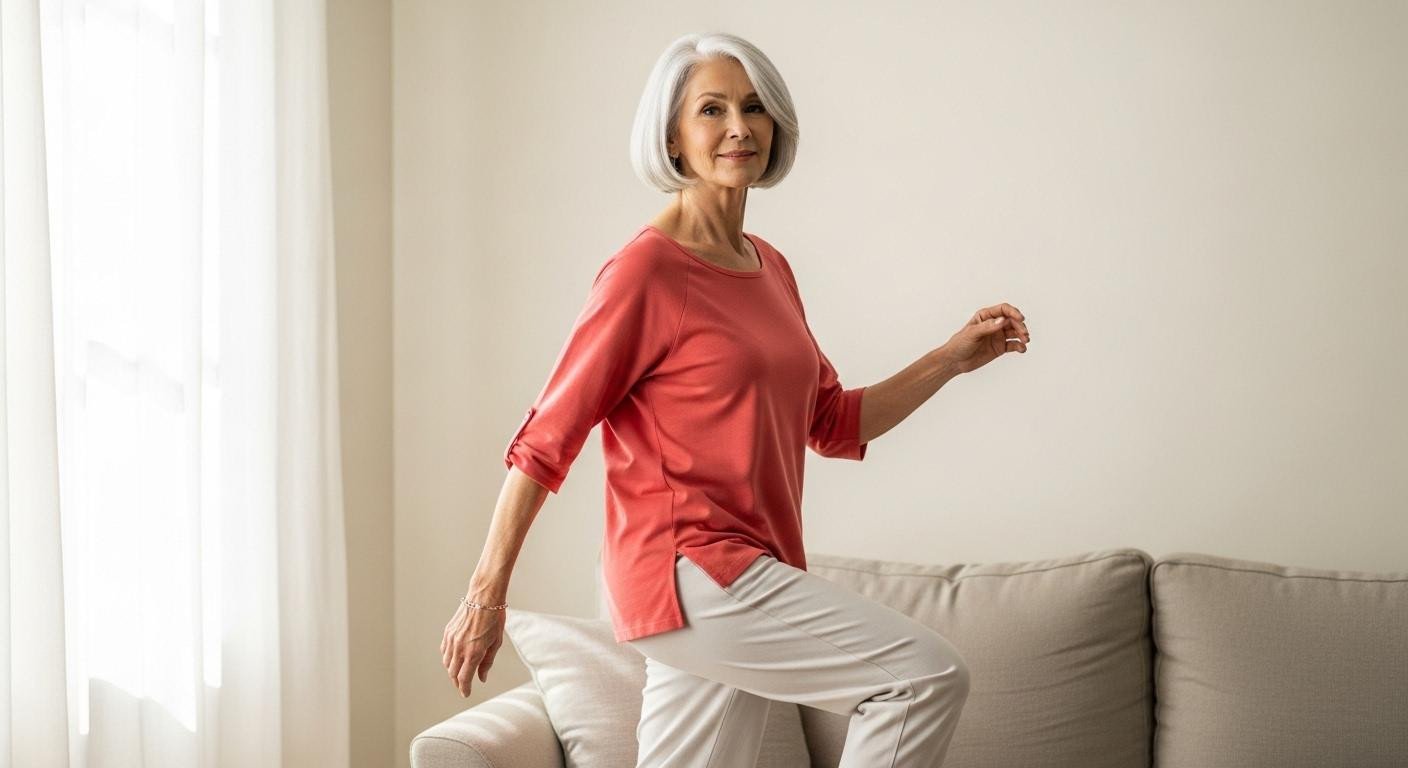Dorothy rises from her living room chair in one fluid motion. Twelve repetitions in thirty seconds. Her daughter Sarah, forty-five and devoted to five weekly gym sessions, managed only ten during the same test. The paradox unfolds daily across America: seniors who never formally exercise outperforming their fitness-obsessed children on functional measures that actually matter.
The genetic fitness baseline most gym-goers ignore
Research from the Journal of Nutrition, Health & Aging reveals a stunning truth. Approximately 50% of muscle strength variability stems from genetic factors. The remaining half comes from lifestyle choices and environmental exposures. Genetics explain why some seventy-five-year-olds naturally retain superior muscle function despite zero gym memberships.
Gerontologists specializing in healthy aging confirm that interindividual fitness differences expand dramatically after age seventy. Vitamin D deficiency affects 47.5% of older adults, directly correlating with muscle weakness. However, genetic variants in the VDR gene significantly influence how efficiently individuals process vitamin D and maintain strength.
The ACE gene polymorphism creates another fascinating divide. Studies tracking 283 older adults found that exercise improved gait speed by 0.06 meters per second among ID/DD carriers. II carriers showed zero functional improvement from structured gym workouts. For these individuals, consistent daily movement patterns prove more beneficial than formal exercise sessions.
Non-exercise activity thermogenesis: the hidden fitness engine
Daily chores as functional training
Dorothy spends two hours daily maintaining her garden and home. Vacuuming burns 170 calories per hour. Gardening torches 135-200 calories in thirty minutes. Her accumulated daily movement equals a forty-five-minute gym session without the time commitment or membership fees.
NHS guidelines emphasize reducing sedentary time over structured exercise. Breaking up sitting every thirty minutes provides measurable health benefits. Sarah’s eight-hour desk job followed by one gym hour creates net lower daily movement than Dorothy’s distributed activity pattern.
The 6-minute walk test reveals the truth
Portuguese researchers discovered a critical gap in modern fitness culture. Walking endurance declined sharply among older adults despite stabilized strength metrics. Dorothy walks 1.5 miles daily for errands and social visits. Her real-world cardiovascular function surpasses daughter Sarah’s treadmill-dependent fitness.
Functional fitness experts note that step count benefits appear at 4,000 to 12,000 daily steps. Dorothy naturally exceeds 8,000 steps through purposeful daily tasks. Sarah drives everywhere, compensating with artificial gym cardio that lacks real-world application.
Functional fitness metrics that actually matter after 75
Chair stands, balance, and real-world ability
The Senior Fitness Test provides validated, accessible assessment tools. Chair stand scores of 10-14 repetitions indicate average function for seventy-five-year-olds. Dorothy’s twelve repetitions demonstrate maintained lower body strength through daily rising from chairs, beds, and toilet seats.
Balance testing reveals another crucial divide. Standing on one foot for ten seconds reduces fall risk significantly. Dorothy practices this unconsciously while cooking, reaching overhead, and navigating her home. Sarah’s plank time becomes irrelevant when considering fall prevention and daily independence.
Why gym metrics fail seniors
Gerontologists studying functional capacity emphasize ability over performance. Weight lifted and miles run ignore agility, flexibility, and balance. Dorothy rises from floors unassisted, reaches overhead shelves comfortably, and carries groceries without strain. These markers predict independence better than bench press numbers.
Research published in Physiological Genomics demonstrates that functional improvements matter more than isolated strength gains. Gait speed improvements of 0.06 meters per second translate to meaningful independence preservation. Dorothy’s natural movement patterns maintain this crucial metric through daily necessity rather than artificial gym exercises.
The nutrition factor gym culture underestimates
Dietary quality independently predicts physical function regardless of exercise habits. Dorothy’s Mediterranean-style eating pattern supports muscle maintenance through adequate protein intake and micronutrient density. Her kitchen-based food preparation adds valuable non-exercise activity while ensuring nutritional quality.
Sarah relies on post-workout protein shakes and processed convenience foods. Research shows that whole food approaches provide superior muscle-preserving benefits. Dorothy’s cooking habits create synergy between nutrition and movement that gym culture typically misses.
Your questions about senior fitness without exercise answered
Can I assess my functional fitness at home?
Yes, the Senior Fitness Test provides free, validated protocols. Chair stands, arm curls, and six-minute walks require only basic equipment. Compare results to age-specific norms available online. The assessment takes thirty minutes and identifies functional weaknesses before serious limitations develop.
How much daily movement replaces gym workouts for seniors?
NHS recommendations emphasize daily physical activity over structured exercise. Two hours of varied household tasks equal sixty minutes of gym activity. Prioritize balance, flexibility, and strength activities twice weekly through yoga, tai chi, or resistance bands. Consistency matters more than intensity after seventy-five.
What if my genetics aren’t as favorable?
Lifestyle factors still determine trajectory despite genetic baselines. Physical activity substantially slows age-related decline even when prevention isn’t possible. Focus on adequate protein intake, daily varied movement, and balance training. Even modest household activity maintains function better than complete inactivity.
Morning sunlight streams through Dorothy’s kitchen window. She hoists her cast-iron skillet from the lower cabinet, practicing functional squats disguised as breakfast preparation. Her phone buzzes with Sarah’s gym check-in selfie. The difference isn’t genetics alone. It’s twelve waking hours of purposeful motion woven seamlessly into ordinary life.
